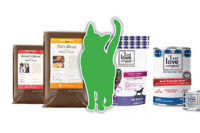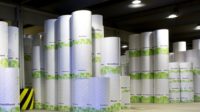Adding a personalized touch to a product or service can prove to be a brand’s unique selling proposition (USP). Personalized packaging has been in the process of constant evolution. Relentless efforts in making the packaging stand out among the clutter and the heavy investments in doing so are evident.
Personalized packaging has assumed more importance as brands not only want to cater to the clients’ needs and wants but obviously want to make a lasting impact by tapping the emotions and desires of customers. Such personalization in packaging reaps long-term loyalty, brand recall and registration. Digital and 3D printing, social media analytics and algorithms, electronic ink technology are just a few among the list of innovations in packaging technology.
A recent report published by PreScouter, a Chicago-based research intelligence firm, on personalized packaging technologies details six recent personalized packaging campaigns run by leading companies such as Coca-Cola, Ferrero and Kellogg’s among others. The report also profiles 10 companies offering personalized/custom packaging solutions.
Beverage giant and frontrunner of numerous customer-centric campaigns, Coca-Cola, launched the “Share a Coke” campaign in 2013 and the brand garnered lot of appreciation in terms of sales as well as brand voice. Consumers were acknowledged by the use of nicknames and popular first names being printed on the bottles instead of the Coca-Cola logo. Consumers could also create virtual personalized cans on the website to order customized bottles or send to a friend on Facebook.
Does Lack Of Logo Hurt Brand?
The absence of a logo could lead to the dilution of the brand identity, but for Coca-Cola it did not. Instead the campaign slogan “Share a Coke” had a strong call to action and convinced people to buy and share a coke. Coca-Cola sales grew more than 19 percent in the first year of the campaign. Coca-Cola partnered with HP Indigo Digital Printing for this campaign.
Oreo empowered clients to choose their own black and white design that can be colored online or custom colored with markers that are home delivered through the Oreo “Colorfilled” initiative. The price of each custom Colorfilled pack was $15, including $5 nationwide shipping for each order. Oreo loyalists made the most of their regular cookie-consuming experience by engaging in this creative customized packaging innovation.
Nutella created a unique packaging design innovation by using an algorithm for personalization. The Nutella jars were marketed to be a like a piece of art and allowed consumers to create Nutella labels printed with words or names of their choice. With this, “Nutella Unica was born – the first limited-edition made by seven million different jars. Dozens of patterns, thousands of color combinations, one special algorithm," as coined by advertising agency Ogilvy & Mather Italia.
The Frito-Lay Snackable Notes packaging campaign made snacking fun, personal and social responsibility centric. It is an ongoing campaign where parents write a note of love and encouragement directly on a talk bubble printed on their kids' favorite Frito-Lay Variety Packs flavor. Every note shared donated to the campaign “Feed the children.”
Blind Customers Receive Message
Kellogg’s targeted the comparatively less focused target population and created the heartfelt campaign for the blind and low-vision individuals in receiving “love” messages from their families and friends during snack time. Rice Krispies partnered with the National Federation of the Blind to create “Love Notes” shaped like a heart with braille stickers that match the spot for writing notes on the Rice Krispies wrapper. Each sheet has eight phrases, from “You’ve Got This” to “Love You Lots.” For people who respond better to spoken words, Kellogg’s offered a recordable audio box. Kellogg's received orders beyond the 7,500 Love Notes planned on the first launch.
Personalized packaging innovations are not only creating a functional impact in the life of the consumers but also trigger recall and loyalty for a brand. These innovations add to the aesthetic value of packaging and create opportunities to engage with customers. Knowing what matters to the consumers of a product and attaching an experience to that need makes a lasting impact.








